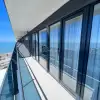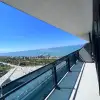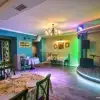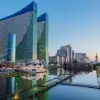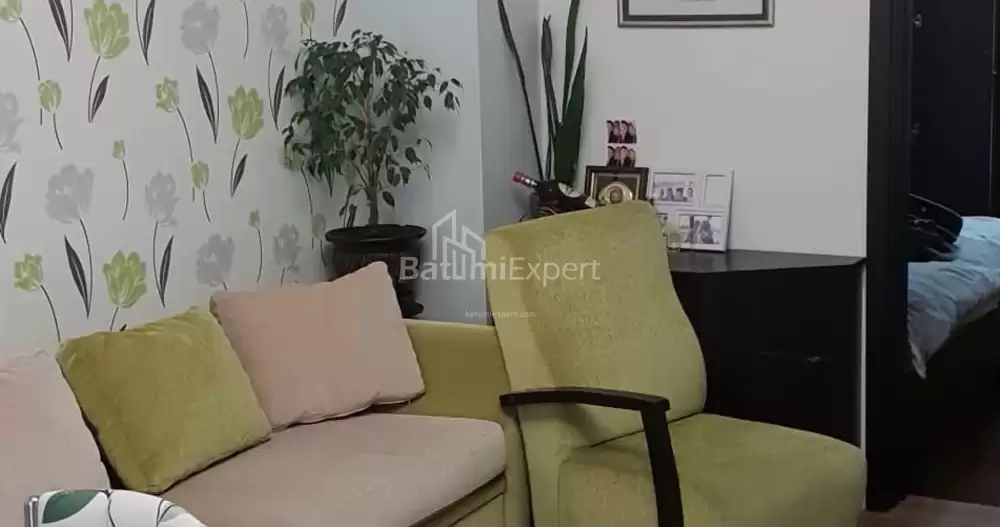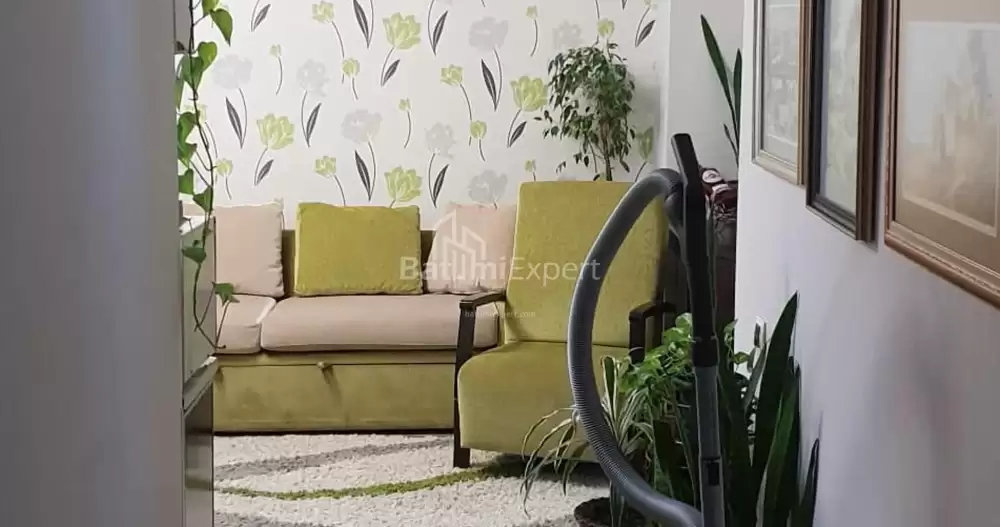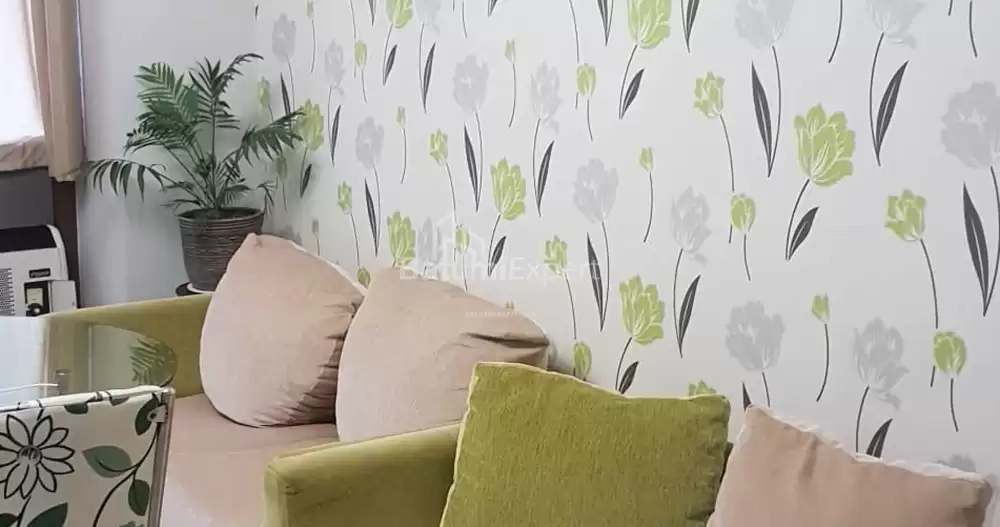All telephones
Apartment 50 m² - street Alexandr Pushkin, Batumi
ID 1132
Created: 18.01.2019
About the apartment
Total area, m²: 49.80
Layout: separate
Condition: renovated
Furnishings: furnished
Bathroom: adjacent
Number of bathrooms: 1
Number of balconies: 1
Natural gas: yes
Heating type: double boiler
Windows type: metal-plastic
Walls type: monolithic
Elevator: 1
Rooms: 2
Floor: 4
Stories: 9
Location
- City: Batumi
- Located on the intersection of: street Alexandr Pushkin- street Giorgi Brtskinvale
- to the old city: 1 km
- to the airport: 5 km
- Distance to the sea: 800 - 1000 m
- View: street view
Description
Send request
Useful information about Batumi and Georgia
Tbilisi, how to forget you
Tbilisi the capital of Georgia, the largest cultural and historical center of the Caucasus, is located at the crossroads of Europe and Asia, located in the Kura River Valley. The history of the city begins with references to warm springs in the fourth century BC. Very warm climate, mountain air and unique vegetation give a special charm to the trip.
The history of the city is voiced in local legends. The king of Iberia Vakhtang Gorgasali, in the fifth century BC, went hunting. The bird he killed was boiled in a hot spring. Having appreciated the healing properties of the springs and the good location, Gorgasali ordered the construction of the city to begin. Until 1936, Tbilisi was called Tiflis, which in Greek means a warm spring, and the current name is a translation from Georgian.
Currency in the country of GEL, you can not rush with currency exchange, the use of credit cards in payments simplifies and cheapens the trip. The food is the most varied, inexpensive, lunch for one person is 15-20 GEL. But be sure to remember the tip.
Where to start the inspection?
The city successfully combines ancient history with modernity. Almost all significant sights are within walking distance. Starting from the very center of Freedom Square, we can go out to the main street of Shota Rustaveli, there are administrative buildings, the Opera and Ballet Theater, turning a little to the left, we will find the national museum and the museum of modern art, the most magnificent building of the Presidential Palace. Numerous cafes, restaurants and shops hospitably open the doors.
Going down Pushkin Street we find houses lined with antique masonry. Turning a little to the left, we see the building of the puppet theater Rezo Gabriadze. Tickets can be ordered online. If you could not buy tickets for the performance, you can simply admire the puppet show on the theater tower, which is repeated every day at twelve and five o’clock. The atmosphere of old streets with carved ornaments and spiral staircases is important. Slow conversations in the shade of the vine, the coolness of the street fountains evoke a desire to sit in silence.
Having reached the glass pedestrian bridge of the World, we cross over it to Rike Park, here is the unfinished theater building in the form of two metal-glass pipes. All this was built no later than 2006.
Old city
From the park you can take the funicular in five minutes to the Narikale fortress, the oldest building that has survived in Georgia. The fortress was built one and a half thousand years ago, destroyed during the earthquake of 1827, but the surviving parts of the walls and towers look very attractive. Entrance to the fortress is free, but to travel by funicular, you need to buy a card that can be used by more than one person. From the observation deck of the park offers stunning views of the entire city. All temples, squares are clearly visible. Temples are a separate line in travels in Tbilisi, there are a lot of them, both old and new.
Rounding the fortress, you can visit the Botanical Garden, sit in the cool of exotic trees, and see flower collections. Walking down the path from the Botanical Garden, you can go to the canyon right in the city. The height of the waterfall is amazing.
Moving away from the noisy stream, right along the path you can go down to the sulfur baths.
Abanotubani are located on the embankment of the Kura River, the buildings are hidden in the ground, only the dome is visible from above. They are called by the color of the dome. Baths are still operational.
This is only about one walking route. You can take a bus sightseeing tour, where you can get off at any stop and then join the next tour. It costs in the summer 25 GEL, valid for 24 hours.
The history of the city is voiced in local legends. The king of Iberia Vakhtang Gorgasali, in the fifth century BC, went hunting. The bird he killed was boiled in a hot spring. Having appreciated the healing properties of the springs and the good location, Gorgasali ordered the construction of the city to begin. Until 1936, Tbilisi was called Tiflis, which in Greek means a warm spring, and the current name is a translation from Georgian.
Currency in the country of GEL, you can not rush with currency exchange, the use of credit cards in payments simplifies and cheapens the trip. The food is the most varied, inexpensive, lunch for one person is 15-20 GEL. But be sure to remember the tip.
Where to start the inspection?
The city successfully combines ancient history with modernity. Almost all significant sights are within walking distance. Starting from the very center of Freedom Square, we can go out to the main street of Shota Rustaveli, there are administrative buildings, the Opera and Ballet Theater, turning a little to the left, we will find the national museum and the museum of modern art, the most magnificent building of the Presidential Palace. Numerous cafes, restaurants and shops hospitably open the doors.
Going down Pushkin Street we find houses lined with antique masonry. Turning a little to the left, we see the building of the puppet theater Rezo Gabriadze. Tickets can be ordered online. If you could not buy tickets for the performance, you can simply admire the puppet show on the theater tower, which is repeated every day at twelve and five o’clock. The atmosphere of old streets with carved ornaments and spiral staircases is important. Slow conversations in the shade of the vine, the coolness of the street fountains evoke a desire to sit in silence.
Having reached the glass pedestrian bridge of the World, we cross over it to Rike Park, here is the unfinished theater building in the form of two metal-glass pipes. All this was built no later than 2006.
Old city
From the park you can take the funicular in five minutes to the Narikale fortress, the oldest building that has survived in Georgia. The fortress was built one and a half thousand years ago, destroyed during the earthquake of 1827, but the surviving parts of the walls and towers look very attractive. Entrance to the fortress is free, but to travel by funicular, you need to buy a card that can be used by more than one person. From the observation deck of the park offers stunning views of the entire city. All temples, squares are clearly visible. Temples are a separate line in travels in Tbilisi, there are a lot of them, both old and new.
Rounding the fortress, you can visit the Botanical Garden, sit in the cool of exotic trees, and see flower collections. Walking down the path from the Botanical Garden, you can go to the canyon right in the city. The height of the waterfall is amazing.
Moving away from the noisy stream, right along the path you can go down to the sulfur baths.
Abanotubani are located on the embankment of the Kura River, the buildings are hidden in the ground, only the dome is visible from above. They are called by the color of the dome. Baths are still operational.
This is only about one walking route. You can take a bus sightseeing tour, where you can get off at any stop and then join the next tour. It costs in the summer 25 GEL, valid for 24 hours.

































